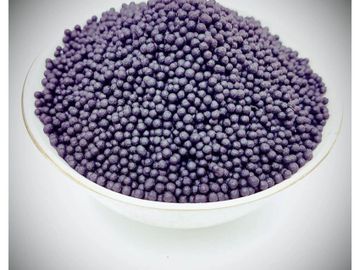
Asafoetida (Hing)
Hathras has been a large scale producer of Asafoetida or hing for the last 100 years. This has given the district a distinct identity. Raw Asafoetida is mainly imported from countries like Afghanistan, Tajikistan, and Uzbekistan among others.Asafoetida as a product is being used since years as an important ingredient.
Asafetida / Asafoetida
What is Asafetida?
Asafetida, also spelled asafoetida, gets its name from the Persian aza, for mastic or resin, and the Latin foetidus, for stinking. It is a gum that is from the sap of the roots and stem of the ferula species, a giant fennel that exudes a vile odour. Early records mention that Alexander the Great carried this “stink finger” to use as a seasoning. It was used as a spice in ancient Rome, and although not native to India, it has been used in Indian medicine and cookery for ages. It was believed that asafoetida enhanced singers voices. In the days of the Mughal aristocracy, the court singers if Agra and Delhi would eat a spoonful of asafoetida with butter and practice on the banks of the river Yamuna.
Asafetida is a hard resinous gum, grayish-white when fresh, darkening with age to yellow, red and eventually brown. It is sold in blocks or pieces as a gum and more frequently as a fine yellow powder, sometimes crystalline or granulated.
Bouquet: a pungent smell of rotting onions or sulfur. The smell dissipates with cooking.
Hotness Scale: 0
Preparation and Storage
It is vital to keep asafetida in airtight containers as its sulfurous odour will effect other foods and spices. It is most commonly available as a powder or granules that can be added directly to the cooking pot. It is also sold in lumps that need to be crushed before using. This is a very powerful spice and even in its ground state lasts well over a year if stored properly, away from light and air.
Cooking with Asafetida
Use in asafetida in minute quantities, adding directly to cooking liquid, frying in oil, or steeping in water. Asafoetida is used mostly in Indian vegetarian cooking, in which the strong onion-garlic flavour enhances many dishes, especially those of Brahmin and Jain castes where onions and garlic are prohibited. It is used mostly in south and west India, though it does not grow there. It is used in many lentil dishes (often to prevent flatulence), vegetarian soups and pickles. It is also suited to many fish dishes and some pappadums are seasoned with asafoetida.
Other Names
Asafoetida, Assafetida, Assafoetida, Devil’s Dung, Devil’s Durt, Food of the Gods (Persian), Laser (Roman), Stinking Gum
French: assa foetida, ferulr perisque
German: Asafotida, Stinkender Asant
Italian: assafetida
Spanish: asafetida
Afghan: kama-i-anguza
Indian: hing, hingu, heeng
Tamil: perunkaya
Scientific Name
Ferula assafoetidaFam: Umbelliferae
Benifits of Hing
- Blood Pressure
- Reduce Bloating and other stomach problems
- Relieve Asthma
- Relieve Menstrual Pains
- Heal insect Bites and stings

How to use Asafoetida ?
Asafoetida has been used for thousands of years to give flavor to dishes. In fact, ancient Romans used to store it in jars along with pine nuts to be used as a seasoning .
Today, ground asafoetida powder, often labeled as hing, can be found online as well as at some Indian grocery stores.
Our Products

Hing Powder
Technically a gum-resin, asafoetida is a hard substance that's extracted from large, carrot-shaped roots of the Ferula plants . Once extracted, it's commonly dried, ground into a coarse, yellow powder, and used for either culinary or medicinal purposes.

Hing Granules
Hing Granules are considered as the digestive spices. Hing granules are effective and are the spices used for the variety of purposes. This spice is considered the best treatment medicine that is used in treating stomach disorders like acidity, bloating. constipation, gas, and improves stomach health.

Raw Hing
This raw hing (asafoetida) powder has a pleasant aroma and is essential to Indian cooking. It comes from the dried resin of a plant from the fennel family. Traditionally, hing has been used as a digestive aid, added to legumes (beans and peas) and gas-producing vegetables.

Hing Oil
Hing oil originates from the resin or gum within the roots of the small plant with the similar name. It is really extracted via steam distillation. It appears pale yellow, golden-yellow, or even dark amber colored. It is also known as asafoetida, heeng, hing.

Asafoetida Oleoresin
Asafoitida Oleoresin has a characteristic aromatic order and bitter acidic taste. It is actually a gum oleoresin from the various plants of ferula varieties. Asafoetida oleoresin is used in diluted form. The pure resin is very strong and with disagreeable odour.

Hing Goli
Hing Goli is made by blending with rich natural and organic herbs along with spices in the right proportion. 2) It is made by mixing right amounts of organic herbs and spices
Order Online
For online order message us on Whatsapp and say Hi,
we will accept payment by UPI, Debit Card, Credit Card, Paytm wallet , etc
Hathras Hing
Shyam Kunj Road, Avas Vikas Colony, Hathras, Uttar Pradesh, India
Blog
Contact Us
Career
Get in touch with us for the best career options in your life as freelancer.
Message us on Whatsapp or mail us on mohitjain@hathrashing.in
Instagram
Copyright © 2020 Hathras Hing - All Rights Reserved.
Powered by GoDaddy Website Builder